The Sound of the Desert
 Friday, August 26, 2011 at 9:29PM Tweet
Friday, August 26, 2011 at 9:29PM Tweet By Jim Poulton
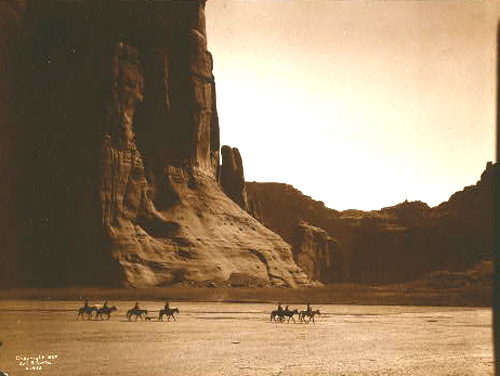 Canyon de Chelly, Edward, Curtis, Credit: Library of Congress
Canyon de Chelly, Edward, Curtis, Credit: Library of Congress
Camping in the desert is a mind-altering experience. The pure silence, except for the murmur of wind; the infinite space, extending beyond anything you can see or hear (as though your tent might as well be pitched on a barren rock drifting in the middle of the universe); and the unyielding, unseeing mass all around you, indifferent to your human feelings and desires – they all seep into you and change you in indescribable ways. When you’re sitting there on a flat stone in front of your tiny fire, you think: there must be a sound somewhere that captures this experience of the desert.
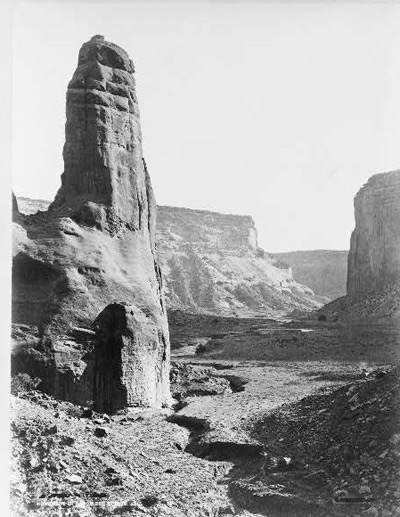 Monument in Canon del Muerte, Arizona, c. 1881, John K. Hillers, Credit: Library of Congress
Monument in Canon del Muerte, Arizona, c. 1881, John K. Hillers, Credit: Library of Congress
There is – it’s ancient, but it fits the desert today as well as ever. It comes from a flute invented by the Anasazi Indians 1400 years ago, and its tone is something you won’t be able to forget. It’s as mellow as the pastel pallet of the sandstone desert, it’s as full of echoes as the canyons of the Ancient Ones themselves, and it’s as still and deep as the miles of sun-filled desert that stretch out before you from any mesa.
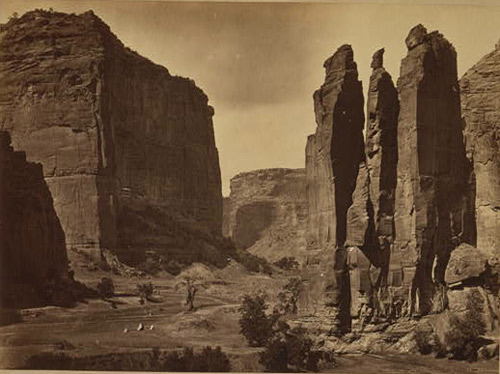 Canyon de Chelly, Timothy O'Sullivan, Credit: Library of Congress
Canyon de Chelly, Timothy O'Sullivan, Credit: Library of Congress
The first ‘Anasazi flutes’ were discovered (or re-discovered) in the 1890s by archeologists exploring the Pueblo Bonito (room 33) in Chaco Canyon in northwestern New Mexico. In 1923, Earl H. Morris, one of the foremost Southwestern archeologists of his time, discovered four similar flutes buried with the body of an old man – a priest or a chief – in the Canyon de Chelly area in New Mexico. Here’s what Morris said about the moment of his discovery:
"I picked up one of the flutes, shook the dust and mouse dung out of it, and placed it to my lips. The rich, quavering tones which rewarded even my unskilled touch seemed to electrify the atmosphere. In the distance Navajo workmen paused with shovels poised, seeking the source of the sound. A horse raised its head and neighed from an adjacent hillside and two crows flapped out from a crevice overhead."
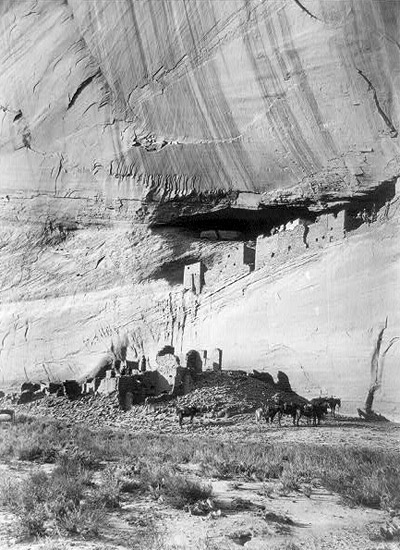 Ruins of the cliff dwellings, Canyon de Chelly, Arizona, c. 1880s, John K. Hillers, Credit: Library of Congress
Ruins of the cliff dwellings, Canyon de Chelly, Arizona, c. 1880s, John K. Hillers, Credit: Library of Congress
These recordings show the flute’s haunting tones, evocative of deep time past.
In 1931, Morris led another expedition to Prayer Rock Valley in the northeastern corner of Arizona. There he excavated 15 caves, the largest of which contained 16 dwellings. In the caves were thousands of artifacts, among them several flutes, which gave the site its name: Broken Flute Cave. The flutes, built between 620 and 670 A.D., were made of Box Elder and each had 6 holes (playing the notes Bb, C, C#, D, F, G and A ). Some of the flutes were decorated - with feathers of Stellar's Jays, Pinyon Jays and Sapsuckers – and with yucca fibers. The flutes had been hidden, in a slot gouged in the floor and extending back under a natural stone at the base of the wall. We may never know why they were hidden – but from the way they distill the essence of the desert, it’s not difficult to think that perhaps they were thought to be sacred.
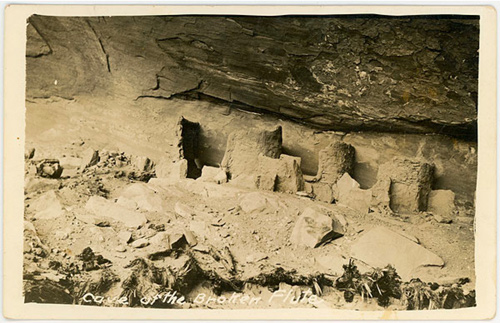 Broken Flute Cave, Prayer Rock Valley Arizona, c. 1920s-1940s Credit: HometownArchive.com
Broken Flute Cave, Prayer Rock Valley Arizona, c. 1920s-1940s Credit: HometownArchive.com
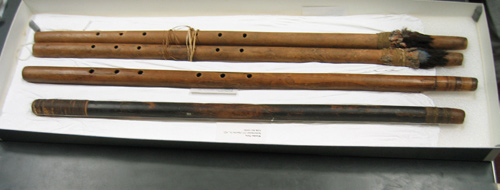 Broken Flute Cave Flutes, Arizona State Museum, Credit: Raptor Review Issue 7, 2007
Broken Flute Cave Flutes, Arizona State Museum, Credit: Raptor Review Issue 7, 2007
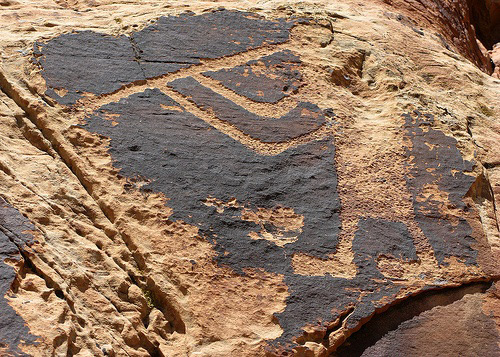 Kokopelli the Humpbacked Flute Player, Dinosaur National Monument, Credit: cvconnell
Kokopelli the Humpbacked Flute Player, Dinosaur National Monument, Credit: cvconnell
Anasazi flutes are now made by a few flute makers in the Southwest. One is Marlon Magdalena, of the Jemez Pueblo in New Mexico. Magdalena thinks the more appropriate term for the Anasazi flute is Ancestral Pueblo Flute (since Anasazi is a multi-meaning term that has been translated both as ‘Ancient Ones’ and ‘Old enemies’). You can hear him playing one of his flutes below. You can also visit him at his website, Aluaki.com.
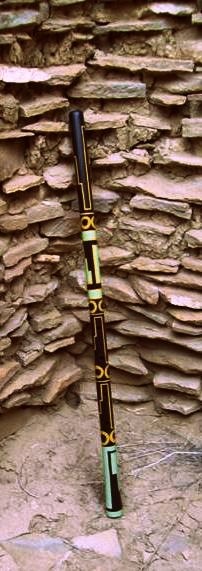 Replica of Room 33 Flute, by Marlon Magdalena
Replica of Room 33 Flute, by Marlon Magdalena
For more info on Anasazi flutes, visit Native Flutes Walking or Flutopedia.com – websites dedicated to encouraging the use and preservation Native American flutes.
